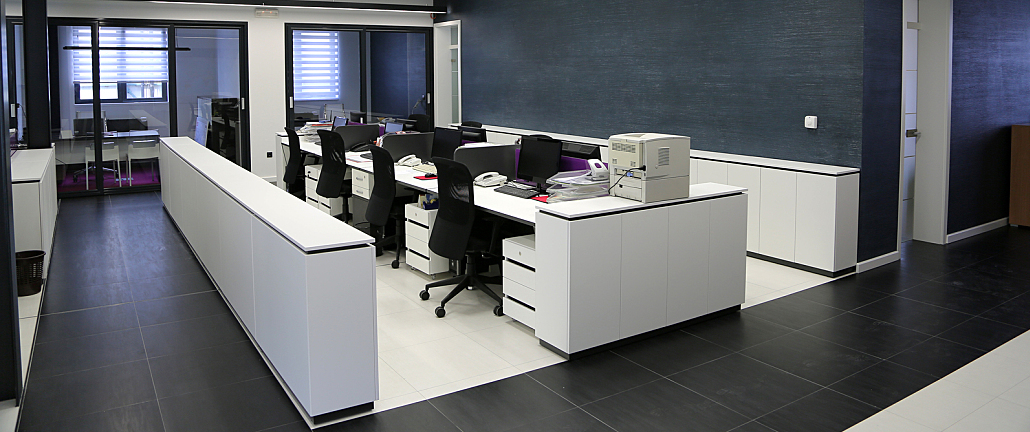Workplace Design to Boost Productivity

Workplace design often goes unrecognized as a driver of employee productivity, despite its obvious relevance to collaboration, engagement and flexibility. Technology such as Wi-Fi, VPN, mobile apps and videoconferencing has untethered many employees from a traditional cubicle and even the 9-to-5 office routine. So workplace design must keep pace with those changes and accommodate the evolving needs of a modern workplace to both facilitate collaboration and drive productivity.
Here we'll look at two midsized organizations that have successfully transformed their physical space to better support their business goals.
1. Olson Advertising: Driving Collaboration and Flexibility
Olson Advertising, in Minneapolis, wanted to design its new office to promote four basic values: collaboration, employee engagement, optimizing physical space and communicating a strong brand image to employees and clients. As Sue Williams, the organization's vice president and director of operations, explains, "Communication, connection, community. This is our mission and our culture. We wanted an office that helped us live that philosophy."
Shared workstations were created, and employees from different teams were asked to sit together in an open space. Workstations were also designed to be modular and flexible, supporting collaboration for large and small teams when needed but also allowing for immersive, individual focus when that was required. Technology was made available and incorporated into the flexible workspace, as were whiteboards for sharing ideas. The few designated offices had glass walls to provide a feeling of transparency.
Olson has found that its employees love the simplicity and flexibility of the space. They have also learned that clients are very comfortable using it, adding to the collaborative feeling. According to Williams, "Our clients book all kinds of meetings here —focus groups, even board meetings. One client set up a standing meeting every other Friday in our conference room. We love that. It keeps clients close to heart."
2. Steelcase (Furniture): Supporting Cultural Change
Michigan-based furniture producer and interior design firm Steelcase decided to transform its headquarters in order to drive the organization's culture toward greater agility, mobility and innovation. The organization began by promoting an internal conversation around how changes in its physical space could support the cultural changes it sought. So physical space was one component of a larger change management process.
The plan to reinvent Steelcase's global headquarters sought to inspire connection through technology and face-to-face collaboration. Breaking down silos and promoting information sharing was a big part of it. The new spaces, many of them open and shared, were intended to catalyze new ways of working. In a way similar to Olson's redesign, the flexibility of the physical workspace would support a more open approach to work.
According to Cherie Johnson, Steelcases's director of global design, "You have a choice and control about when, where and how you work, so whatever your work requires, there is a 'best place' for you" somewhere in the reinvented headquarters. The space enables collaboration by providing employees the flexibility to work individually, work with team members and even socialize, all from one central location.
One of the major features of the Steelcase redesign was a WorkCafe that served as a cafeteria and coffee shop but also a community meeting center. The WorkCafe is a "third space" between work and home and has become popular among employees for casual meetings and informal information sharing. "Everyone comes here," says Johnson. "You see leadership, people from other parts of the organization, visitors, customers. You meet people face-to-face instead over the phone or email, so it builds rapport and trust across the organization, and it nurtures those qualities in your culture."
Steelcase noticed marked improvements in employee engagement after the new workplace design. An impressive 86 percent of employees felt that they had a variety of spaces available to meet their daily work needs in the new space, compared to 75 percent who said so about the old space. In addition, only 42 percent of employees felt that the old workspace helped to attract and engage employees, whereas 70 percent felt that way about the new work space. Employees also felt the new space promoted a better learning environment, fostered more new ideas and made technology more accessible to all.
Workplace design matters because it can enhance your organization's productivity by giving your employees a work space that fosters collaboration, provides easy access to technology and affords them the freedom to work in the way that suits them best.



